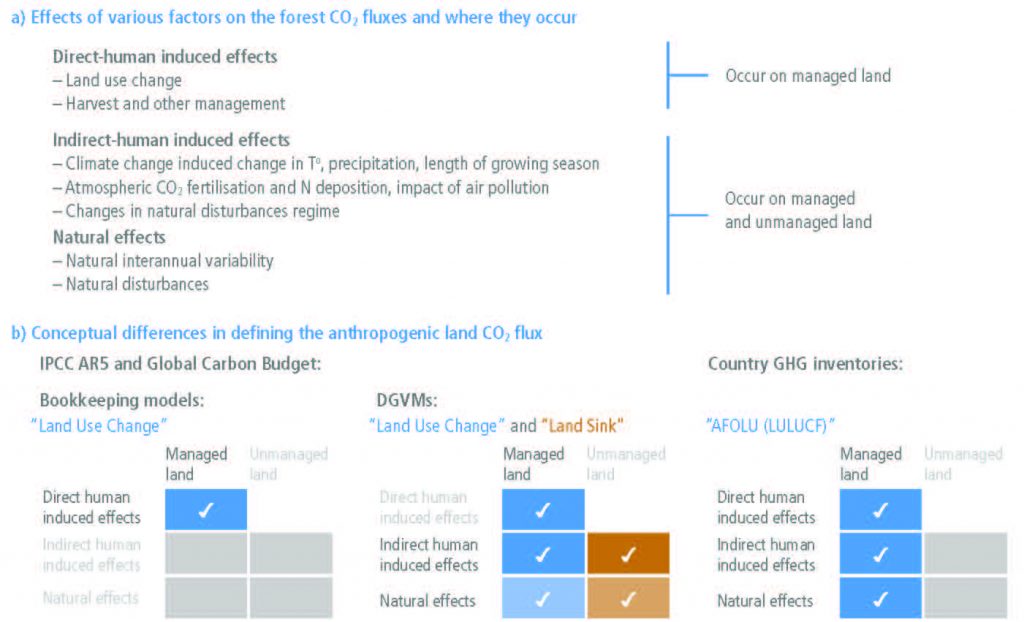
Figure 2.6
Summary of the main conceptual differences between GHG Inventories and global models in considering what is the ‘anthropogenic land CO2 flux’. Adapted from Grassi et al. (2018), effects of key processes on the land flux as defined by IPCC (2010) including where these effects occur (in managed and/or unmanaged lands) and how these effects are captured in (a) bookkeeping models that do not explicitly model the effects of environmental change (although some is implicitly captured in data on carbon densities and growth and decay rates), (b) DGVMs that include the effects of environmental change on all lands, and run the models with and without land use change to diagnose ‘land use change’. The ‘land sink’ is then conceptually assumed to be a natural response of land to the anthropogenic perturbation of environmental change, DGVMs include the effects of inter-annual climate variability, and some include fires but no other natural disturbances, and (c) GHG Inventories reported by countries to the UNFCCC that report all fluxes in areas the countries define as ‘managed land’ but do not report unmanaged land. This is the CO2flux due to Land Use Land Use Change and Forestry (LULUCF) which is a part of the overall AFOLU flux. The area of land considered as managed in the inventories is greater than that considered as subject to direct management activities (harvest and regrowth) in the models.